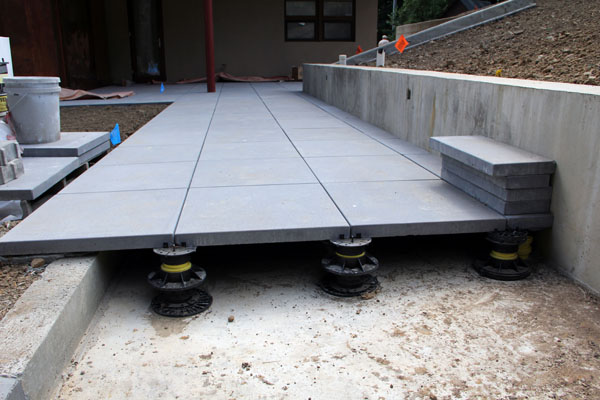Deck-Building Materials

Arrive prepared at the store(s) where you’ll be buying materials for your deck, and solicit the help of store workers who can listen to your needs and guide you accordingly.
Redwood and Cedar

img: timbertown.com
When properly installed and maintained, redwood and cedar perform well. Both have been used to build outdoor structures for centuries because they are naturally rot resistant. They are also expensive, however, so most people use these boards only for visible surfaces, such as deck boards, railings, and stairs.
Pressure-Treated Lumber
Pressure-treated southern pine, a dense softwood lumber with a chemical preservative forced into its wood fibers under high pressure, is a less expensive alternative. It can be used for hidden structural components such as posts, beams, and joists.
Grades of Pressure-Treated Lumber
Most lumber suppliers stock two grades of pressure-treated wood. The more durable (and expensive) type is called ground contact and is used for posts and wood walkways. The standard grade contains less preservative and is recommended for beams, joists, and decking.
Pressure-Treated Lumber Precautions
Be careful when handling pressure-treated wood:
- Wear gloves, long pants, and a long-sleeved shirt.
- Wear safety glasses.
- Cover your mouth with a mask.
- If you have leftover scraps, don’t burn them.
- Don’t let children play with scraps.
- Dispose of the wood according to local regulations for handling toxic materials.
Composite Lumber
Composite lumber is made by combining recycled plastic, waste wood, and various chemical binders. It is both rot and insect resistant and virtually maintenance free. If you like the natural color of the boards, you’ll never have to paint or stain them. Periodic washing is all that’s required.
Composite lumber is cut, drilled, and installed just like wood lumber, but composite lumber isn’t meant for structural components such as beams and joists. It is strong enough only for decking and trim boards. Some is quite expensive, costing more than all of the wood alternatives.
Lumber Dimensions
Just about everyone refers to lumber by its nominal size, which is a harmless, old convention. But when you’re working with it, don’t ever forget the actual dimensions.
|
Nominal Size
|
Actual Size
|
|
|
1 × 4
|
3/4″ × 3 1/2″
|
|
|
1 × 6
|
3/4″ × 5 1/2″
|
|
|
5/4 × 6
|
1 1/16″ × 5 1/2″
|
|
|
2 × 4
|
1 1/2″ × 3 1/2″
|
|
|
2 × 6
|
1 1/2″ × 5 1/2″
|
|
|
2 × 8
|
1 1/2″ × 7 1/4″
|
|
|
2 × 10
|
1 1/2″ × 9 1/4″
|
|
|
2 × 12
|
1 1/2″ × 11 1/4″
|
|
|
4 × 4
|
3 1/2″ × 3 1/2″
|
|
|
6 × 6
|
5 1/2″ × 5 1/2″
|


